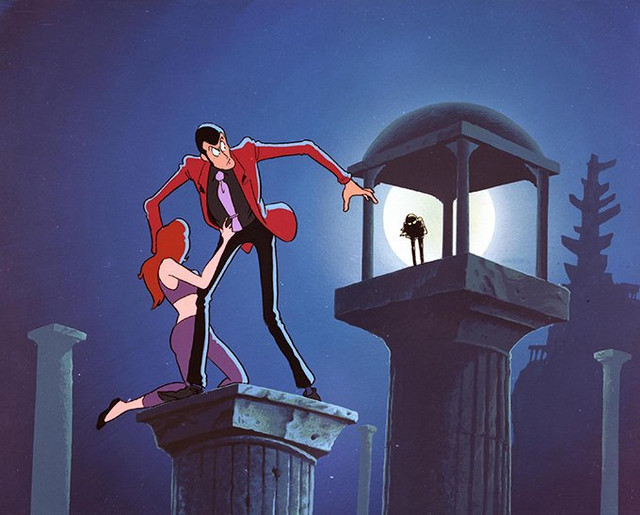Continuing on from before, this is probably the longest list in terms of candidates as, considering my other blog is called Cinema of the Abstract, I do like the weird and the unconventional in my viewing, and there were so many examples from the 100 anime reviews I have written than it felt unfair not to increase the number to eighteen. It may be an awkward number, but all these titles need to be covered.
As a bonus, as I have covered non-anime if it has a tentative tie - live action adaptations of the source material, adaptations of work by manga authors who have had anime adaptations, a Batman animation with prominent Japanese animators on staff, and a look at South Korean animation - I'll throw in the best three here too.
The Strangest Anime
Honorable mention goes to Requiem from the Darkness (2003), which visually with its Edo period setting as depicted in dream-like colours and non-human background characters, but is still a very straightforward horror tale of the worst in humanity. Aesthetically distinct productions will get a list for themselves and I'll bring this TV series up again. Gyo: Tokyo Fish Attack (2012) also needs to be mentioned just for adapting the original manga by Junji Ito, about undead fish on robot legs climbing out the sea and invading Japan, but for all its weird premise, alongside flatulence being a prominent aspect, this list has been difficult for just how many titles I kept forgetting needed to be included, so the list was weirder enough as it is without including this divisive OVA release.
18. Wanna-Be's (1986) [REVIEW]
An OVA where a tag team of female pro-wrestlers must fight a conspiracy to blend alien DNA into female wrestlers to make stronger competitors? A little bit of a spoiler for Wanna-Be's, a project famed eighties character designer Kenichi Sonoda worked on, but damn that's a strange premise even for the OVA boom of the eighties where anything could be financed. Many a weird title will eventually be covered, but this had to be mentioned.
As talked about in the review, the fact this was overtly weird, about a trio of female model enthusiasts more obsessed with hurting each other and encountering strange figures, is actually less weird than it was played straight and serious. However, unlike the reason it became an internet meme to post images from, particularly about the male character who explodes his own clothes off, director Tsutomu Mizushima and his misanthropic view of the world especially when it comes to his infamous "comedies" is strange and twisted enough to raise eyebrows.
A show that ended up being reviewed twice on this blog which is strange enough. The reason how this project came to be, when ADV Films were given a sluggish children's horror show and given carte blanche to make a profane and mocking English dub, is one of the strangest production histories in US anime dubbing and why the series is still known. Neither dub is truly successful, but I'll be controversial (despite it taking four months to finish) to argue the original Japanese dub is the best; the English thought, marred by some of the jokes being too offensive and sophomoric alongside being stuck in 2005 for pop culture references. Nonetheless that more infamous dub is fascinating and when it actually succeeds does work, i.e. when veteran voice actress Monica Rial, actually given a great performance, is allowed to turn the character of Monoko from a Evangelical Christian piss-take into an Evangelical Christian who falls back into her real self occasionally, and Rob Mungle as a demonically possessed, egotistical cat. It's still a mess that has dated badly into the current day, but adds a weird legacy to a production that could've easily been forgotten.
15. Salaryman Kintaro (2001) [REVIEW]
I regret getting rid of my DVD copy of this series, the least likely to ever get a UK release when only the Americans got an anime industry large enough in the 2000s for any weird title to get a release. This is one of the obscurest to hit the UK shelves and is weird for what it turned out to rather than being bizarre, more so as its a curiosity in what is actually seen onscreen. It's a melodrama for men about a former biker gang leader Kintaro who decides to become a salaryman and takes his headstrong mentality into the world of the construction industry, eventually becoming a tale of perseverance against corruption. Dramatic beats are entirely in the later episodes built business talk and ballots even if Kintaro occasionally fights people. Tonally it's odd too as for the most part its a family friendly work which does tackle some serious content, but you could imagine actually being on at six pm on Japanese television, until the moments you have actual female nudity, the kind some fetishistic echii shows shown after midnight have to have censored and never actually show.
In lieu of an early 2000s production which in its earnestness and low budget is not a great series, its a curiosity to say the least when even the premise, melodrama about construction business corruption and white collar virtue from a biker punk, is unlike anything you'd see in Western animation.
14. Yuki Terai - Secrets (2000) [REVIEW]
Speaking of obscurities released in the UK on DVD, a compilation of virtual "star" Yuki Terai through various music videos and short films, itself just in principal still weird even now we have the likes of Hachune Miku and Virtual YouTubers in existence in the 2010s. Mainly because the idea of virtual stars replacing real ones is an idea, no matter how hard is tried, isn't going to work unless we can recreate Sharon Apple from Macross Plus (1994), something to consider that I have covered Final Fantasy: The Spirits Within (2001), where a fictional actress was being promoted as a breakout star, the same time as Yuki Terai was and disappeared into obscurity. That in itself, with Terai virtually unknown in the West, is strange in a depressing way as even b-movie actresses can have a longevity in their fanbases decades later but fictional stars can fall into ruin, between being replaced by better animated new "stars" and the limitations of what roles they can do if their creators don't use them enough, with a harsher end of their careers.
13. School Days (2007) [REVIEW]
School Days is, again, an example of something stranger in experience and history then the content being surreal, as for me the entire concept and execution of this series is so unique and idiosyncratic.
When it was decided to make an animated series from the titular work, an erotic visual novel game with the convention of multiple endings which varied between the best to the most gruesome of conclusions, someone on staff had the brilliant idea to base the series on the worst possible ending you could achieve. That our bland, stereotypical male hero surrounded by many potential female love interests, the kind we rightly criticise but keeps being used for a male wish fulfillment fantasy, is so oblivious that he sees nothing wrong with cheating behind multiple girls' backs, all whilst they themselves and other members of the school barring a couple of characters exhibit the worst decisions and attitudes possible, is like the worst bad trip experience for any viewer to have but is cathartic as a scorched earth tactic on this type of storytelling. It feels over the top and unlike real life in many ways, so extreme at point in mood its ridiculous if you weren't watching it between your fingers, and yet it still hits a sore point in also imagining teenagers as dumb and controlled by their hormones and moments of spitefulness, willing to do callous things to others in gossip and tricks as well as not take wise decisions, all which unfortunately (even if less exaggerated) is true to real life.
In this case, all of this culminates into a final episode which had to be briefly pulled off air as it had the unfortunate timing to an actual murder, leading to an internet meme just for the really bad censorship decision one channel took in using a picture with a "nice boat" on it, a meme which lasted briefly and was referenced in other anime which itself is as strange as you could get. It is not a pleasant experience to watch School Days, like being continually punched in the gut as the user comments on Crunchyroll were themselves a spectacle of pain and agony from other viewers, but its one of the most unique experiences for me even if some of it, with its occasional leering shots and big eyes generic character designs, is possibly by accident. Its certainly deserving of more interest.
12. Paranoia Agent (2004) [REVIEW]
Surprisingly low on this list, but with another Satoshi Kon production observably higher, his sole television series must be viewed in mind that, whilst incredibly strange in its reality bending, Paranoia Agent is more an exceptional gem where the oddness of what subjective images (or ones that turn real) appear onscreen have a grounded and deep explanation behind them, a puzzle box whose surrealism is more in lieu for psychological existentialism than some of Kon's more overtly weird work elsewhere. That doesn't deny a show about a mythical boy who gives people amnesia with a golden baseball bat, an episode where a police interview enters a fantasy realm for metaphor, and an ending where hundreds of the cute dog mascot appearing isn't peculiar to say the least, so it had to be here.
11. Yurikama Arashi (2015) [REVIEW]
Honestly, in any other circumstances where there was fewer stronger rivals, all of them weird, all of them unique, some of the idiosyncratic creators and figures on this list would've been at Number #1, Kunihiko Ikuhara the kind of man who, unless you were talking about his days on Sailor Moon (and rumors he was on the animation staff for episodes of the original Teenage Mutant Ninja Turtles series for a multi-episode story arc) would be the King of the Weirdness list, at least a prince or maybe a princess, among the heavy hitters of surreal anime, just so he can cosplay as a Sailor Moon character again as photographic evidence has proven.
His tale of an (almost) entirely female world of bear girls and their conflict with human girls, and a love which dares not speak its name, doesn't even try to hide the fact its a challenge in terms of depicting lesbian concepts onscreen, with enough blatant flower imagery to not try to hide the yuri content is explicitly romantic and sexy. The show is as much strange and unique as with many of the figures on their list for taking premises and pushing even their presentation to overt levels. Ikuhara is a man with a damn good aesthetics game, where every colour and symbol is repeated throughout, where even material which probably doesn't make any sense to him is still imbued with an emotional connection so that, by its ending, Yurikama Arashi's as likely to lead to damp eyes as it is cheers.
It was, also, his last until 2019 with Sarazanmai, in which he proceeded to never inform the producers the plot would involve its story involving exorcism by inserting things up their butts, only to sneak it in afterwards when the project was greenlit, so he's thankfully not changed in the damnedest.
10. Boogiepop Phantom (2000) [REVIEW [OR HERE]]
Now that Boogiepop and Others (2019) exists, there may sadly be a chance that Boogiepop Phantom, the original animated adaptation of Kouhei Kadono's light novel series, will be abandoned and forgotten. As much of this, whilst the new series is meant to be as unconventional, is because rather than a first story, this 2000 series is an adaptation of a sequel novel which leaves a lot unexplained in this complex lore. But for me personally, once you expect this, Phantom is an incredible piece of experimental genre television which, for every detail that makes no sense, still (barring one plot point) is a concise one-series story, even more unconventional as (until the end) scenes are told in non-chronological order, with characters appearing in other episodes after having an episode devoted to them, and entirely within an aesthetically bold work. Working with what was available in the production schedule, it stands out as unique with an intentionally dulled look, muddied visuals, one of the best sound designs in all I have covered, and definitely getting weird at points just from the opening credits song being a sultry lounge ballad incongruous (yet strangely right) for the series. I wondered how this'd be experienced back on Japanese television after midnight, like stumbling on a mind bending UFO on television if you caught a middle episode or half way through one, and out of all the anime covered, Boogiepop Phantom is the one out of all of them which gets on the list with this in mind.

9. gdgd Fairies (2011/2013) [REVIEW [OR HERE]]
The trend for micro-series has come as much from new voices appearing and being allowed to helm projects. Most are comedy, which even take advantage of their cheapness in production for the joke. Out of all of them, Sōta Sugahara and Kōtarō Ishidate were pioneers with gdgd Fairies, and even when Kōtarō Ishidate left after Season One and different screenwriters were brought, I'd argue Sugahara by himself in the director's chair turned a fun series into something spectacular. As mad as a box of frogs, the initial premise to just bemuse the voice actresses with improvised dubbing pools, and gleefully raiding preexisting (and bad) CGI models turns into something glorious by Season 2 with a multi-episode time travel narrative, a word pun game involving the type of tires for a car that, even as a non-Japanese speaker, is turned into something legitimately incredible thanks to the precise subtitles making the jokes funny, a hot springs episode where five plus minutes are facing the ceiling, and the entire subplot of one cheap template, a purple haired old woman, becoming a side character completely naturally (as felt) in the production of the show just because voice actress Satomi Akesaka, even among a great trio of leads, kept falling into whiplash inducing voice changes and has a tendency to suddenly starting singing whenever they go to the dubbing pool.
Micro-series were covered a bit, and whilst a few are weird in premise, a lot were one trick ponies that lessened in weirdness the harder they tried to be stranger (Onara Goro (2016) despite being about sentient farts) or even if charming in their daftness (Sparrow's Hotel (2013) being cheap as hell visibly in appearance and premise of a busty former mercenary turn hotel staff member) weren't really weird in a way beyond irony. gdgd Fairies was one of the first I covered, still the best, and the weirdest as much as this type of work despite its irony actually had a heart, something you can just tell as you enjoy the voice actresses at times actually slip up and giggle at how absurd the scenario foisted upon them is.
8. Night is Short, Walk on Girl (2017) [REVIEW [OR HERE]]
Masaski Yuasa's another figure who'd get on a strange anime list any day of the week, his return to the world of The Tatami Galaxy (2010) not necessarily following the characters you'd presumed, with those who return a wonderful reunion to meet again,. Instead his delirious take on one young woman's night of drinking and living life, of the God of Used Books and terrorist musical theater all provided through a psychedelic aesthetic and a heart. Even the one contentious aspect, that the lead male character is a problematic arsehole, is neutered knowing he gets his head kicked in and that, even if he and the girl are to fall in love, its through him having to change a lot through bizarre circumstances (and an army of libido cowboys, a cameo I didn't expect to return) whilst our female lead is happy, bright and never challenged on a wonderful night out. Not surprisingly, this work looks as good as you'd expect from him. More surprisingly, Yuasa a year or so afterwards from this would adapt Go Nagai, get on Netflix, and is looking like he's permanently going to get to helm whatever the hell he wants whilst everything's looking good, such a wonderful turn for a man who had such a difficult getting projects this unique off the ground and had most of his work unavailable in the West.

7. Mononoke (2007) [REVIEW]
Managing, as a spin-off, to be much more well known than the original horror anthology Ayakashi: Samurai Horror Tales (2006) that first debuted its lead protagonist, Mononoke pushed the horror anthology in an utterly unique and symbolic art style and plotting which I adored, looking like little in terms of aesthetic but itself. But, a huge distinct, that material, as well as tackling incredibly dark material, is weird enough to get on this list, when voice actor Norio Wakamoto appears as a ghost fish playing a shamisen. That's before we get to screenwriter Chiaki J. Konaka, a man who has frustrated as many anime fans as won the likes of me over, when he spends an entire arc on a competition of perfume games referencing the Tale of Genji. Yes, its as peculiar as you'd expect from him.
6. Paprika (2006) [REVIEW [OR HERE]]
Speaking of Satoshi Kon, whilst he passed too early in the prime of his career, his last film at least was the weirdest of his career, naturally when adapting a Yasutaka Tsutsui novel about entering dreams depicting dreams and his own obsessions in as elaborate form as possible. Paprika is still a very narrative clear and driven conspiracy plot, but with the full power of Madhouse as a studio behind it, the phantasmagorical images shown here stay with you.
5. Urusei Yatsura 2: Beautiful Dreamer (1984) [REVIEW]
Speaking of dreams, Mamoru Oshii once used to be a director of comedy, which is a very strange thing to consider nowadays when he is known for cerebral material like Ghost in the Shell (1995). Even stranger, when he helped the franchise for Urusei Yatsura become a success in animated form, he was able to make this second theatrical film where that comedy was matched by the philosophy he'd dive head first into whilst still being a beloved part of the franchise. So he got to have his cake and eat it, between tanks inexplicably being found in the school swimming pool to giant turtles, which manages to be stranger for me than even Paprika and brought a together absurd fantasy comedy with absurd dense, beautifully illustrated existentialism together into something utterly unique.
4. Midori (1992) [REVIEW]
As independent productions go, none are as notorious and with such a complex history as Midori, Hiroshi Harada's adaptation of Suehiro Maruo's Mr. Arashi's Amazing Freak Show entirely made by himself over many years barring some additional help and with music by legendary avant-garde rockist J. A. Seazer. Even the nature of Midori is weird, only possible to see in Harada's homeland as part of a living carnival, and has only been probably available in a French DVD. The film, a grotesque but compelling piece of ero-guro, is disturbing and absolutely strange itself, something you should be cautious going in watching but is an incredible labor of work.
3. Ai City (1986) [REVIEW [OR HERE]]
In the midst of the ESPer/Psychics obsession in anime and manga, when everyone was including them as a plot point in the eighties, future Bee Train founder Kōichi Mashimo decided to helm this incredibly animated but utterly convoluted and illogical escapade in this sub genre. Plot points whip the viewer in violent new directions, details are not clearly defined, and that's before we get to how easy it is to break through reality like tissue paper or how, despite this being a serious sci-fi action tale set in a dystopian metropolis, there's inexplicably an anthropomorphic cat there alongside one of the female character spending most of the film in a Playboy bunny suit. With tiny men in giant man sized suits who can conjure giant floating heads with his mind, and an ending which screws with the viewer, it may seem ridiculous to have Ai City this high up, but not without good cause.
2. The Flying Luna Clipper (1987) [REVIEW]
This, instead, might be more controversal this high up, but I decided to have an underdog share some glory especially as this is tragically as obscure as I have covered, only possible to see because of amateur preservation and really deserving a proper release if the source code can be relocated. Inherently one of the strangest aspects is that this was animated using the polygons of a MSX2, a video games console/computer that was never released outside of Japan, emphasizing my curious choice of words beforehand. Even more stranger, justifying this high entry, is that you are still watching a film about an imaginary holiday on a flying clipper airplane where, among passengers and air hostesses who are anthropomorphic fruit and animals, your holiday is both to Hawaii and into dreams. Imaginative indeed.
1. Belladonna of Sadness (1973) [REVIEW]
Just knocking it off the top spot though is another one-off, which has likely influenced Kunihiko Ikuhara (who, bless him, as called this an influence) but for many is utterly alien to most modern anime. The last production of an already dying animation studio, studio Mushi Productions decided to throw caution to the wind with a work where, among limited animation but stunning Art Nouveau influenced imagery, decided to adapt non-fiction text Satanism and Witchcraft by Jules Michelet into a psychedelic and sexually transgressive tale of Jeanne in medieval France who, in the midst of corrupt of the higher classes and discrimination against women like her, is pushed to witchcraft and allegiance with the Devil. The best way to describe this, thankfully now available after years of merely being bootlegged, because of Cinelicious restoring the source negative and Anime Limited in the UK also releasing it, is to just look up the trailer or images online, as among the harsher and strongest of competition, this is unlike anything in anime you could find.
====
Best Bonus Review
Honorable mention goes to Christoph Gans' Crying Freeman (1995) which, whilst it doesn't get on the list, is fascinating as a film that, whilst looking like a lot of the lurid straight-to-video action films from the time, was a FAITHFUL adaptation of the first chapters of the late Kazuo Koike's manga dripping in style, that use of capitals on purpose as it was actually being far more . Its a fascinating production, sadly one that never got a true US release unlike Europe, that is arguably one of the few successful adaptations of a Japanese property because Gans, whilst not a prolific filmmaker, is idiosyncratic in his labor.

A great candidate for strangest if I was including live action films, Higuchinsky's adaptation of Uzumaki has a major flaw that, as Junji Ito's manga about a town terrorized by spirals got way too fantastical in the final chapters to be recreated on the film's budget, he likely had to leave the production on an abrupt anti-climax halfway through the story. A shame, but not without the Ukrainian born Japanese filmmaker managing to depict Ito's work through his own style, all whilst strangely evoking the Black Hole Sun music video by Soundgarden a few times. Considering attempts at adapting Ito have been difficult in animation - Gyo (2012) lurid fun but ridiculous, the Junji Ito Collection (2018) an unfairly criticized TV series but one straining under its lack of budget - maybe it was wiser as here to not try to recreate Ito's perfectionist layer of detail, the reason I'd argue his work is his own, and make it into one's own vision as here.
2. Guyver: Dark Hero (1994) [REVIEW]
The original 1991 live action Guyver film, produced by Brian Yuzna with special effects genius Screamin' Mad George co-directing with future Drive (1997) film maker Steve Wang, is a curiosity but not sometimes for the better. It's for large portions of it a campy film you'd have rented out by young teens, not the ultraviolent sentai tale as the original source (or the anime adaptations) portray it to be, barring the fact the original version of the film had the gore, and a cavalcade of cult stars like Michael Berryman, David Gale, Jeffrey Combs in a cameo, and Mark Hamill of all people as a grizzled cop who gets the weirdest (and best) of Mad George's insane special effects sequences. It's a film with incredible costumes and effects, because of George, but within bad slapstick comedy and the goofiness undercutting the tone; that the version I saw, the only one now available aside from a German release, is the "Director's Cut", adding comic book transition wipes but removing the gore, makes it a mess.
Wang came back for a sequel however, with future Solid Snake voice actor and future screenwriter of superhero films like of the 2009 Watchmen film, David Hayter, as the Guyver and, even if lower budget in terms of less elaborate effects, Dark Hero by itself is what pulp b-movie cinema should be. It's effectively a feature length Power Rangers episode if stunt people, in elaborate costumes, looked like they were actually kicking the shit out of each other onscreen to the point even the padding of those costumes looked like they wouldn't cushion some of the stunts that take place, wrapped in a cliched but effective story. Like Crying Freeman, it is probably one of the only Western adaptations of a Japanese property to "get" this material even if it had to transition it through limited resources, having to shoot in the woods (which isn't a bad thing at all here), and spend half its time letting the stunt team fight. Unlike Crying Freeman, I adored this film. A proper release of this, DVD or Blu-Ray, rather than the old DVD I have would be much appreciated.
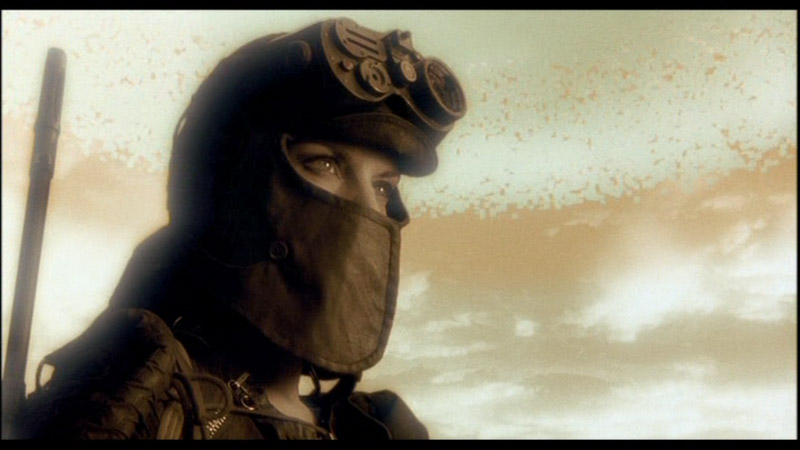
Finally, a Mamoru Oshii live action work; this aspect of his career is maligned, not necessarily looked highly upon, but I'd argue his Polish-Japanese co-production Avalon is an immensely rewarding experience that fits his philosophically heavy CV completely. Not trying to be realistic in the slightest, the inherently dated computer effects for a world which lives through a combat video game, and a world itself unstuck in any period barring its own, has left it ageless and Oshii (without ruining the plot) does play with tropes and ideas that may have appeared in mainstream cinema, The Matrix (1999) especially, but with his own distinct worldviews. It's as much a gem in Oshii's career, live action or animation, let alone in the live action work; if it was more easily available, I'll be gladly covering this maligned aspect of his career with optimism.
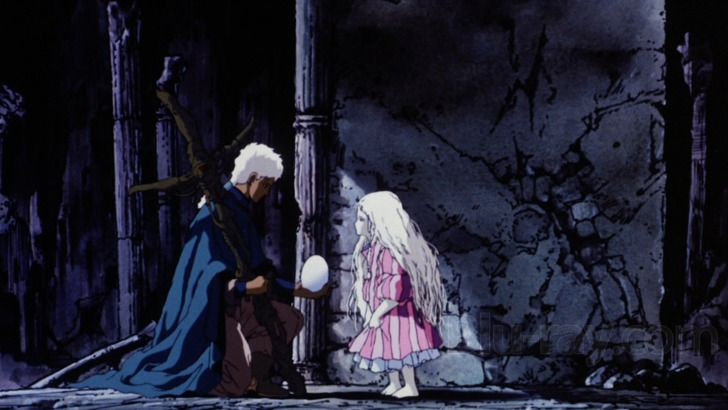




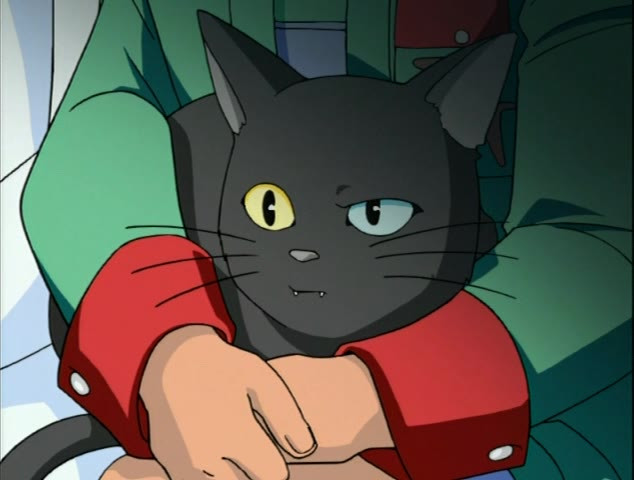







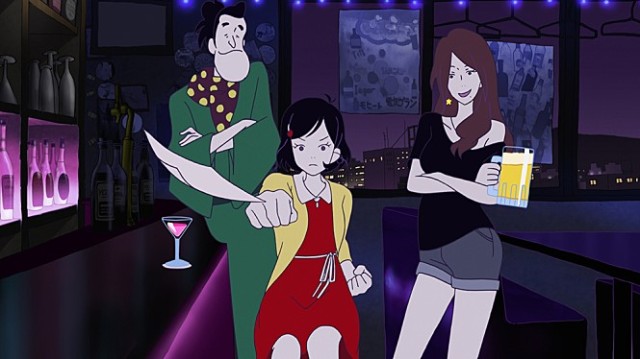


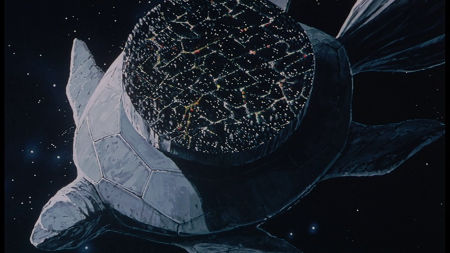







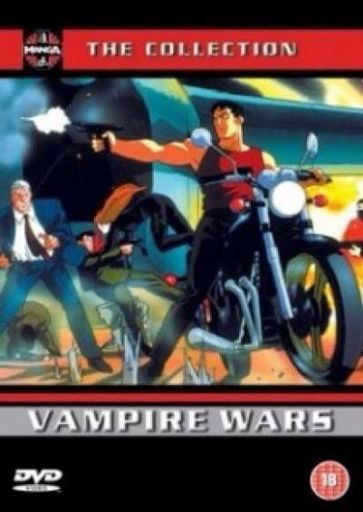

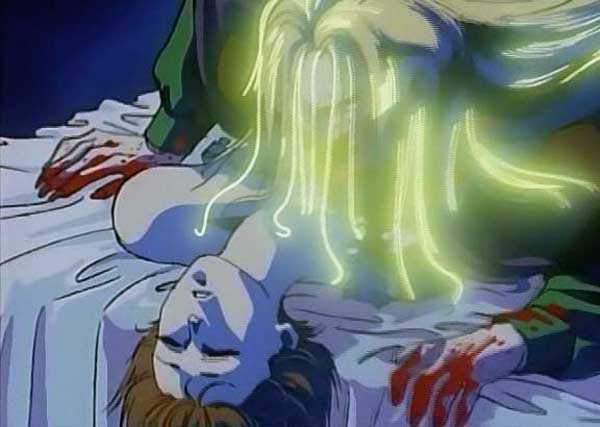




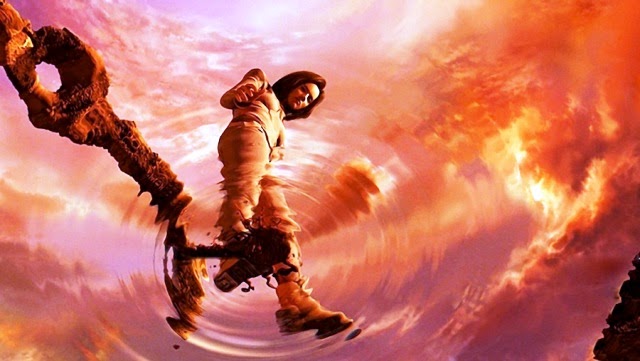.jpg)


